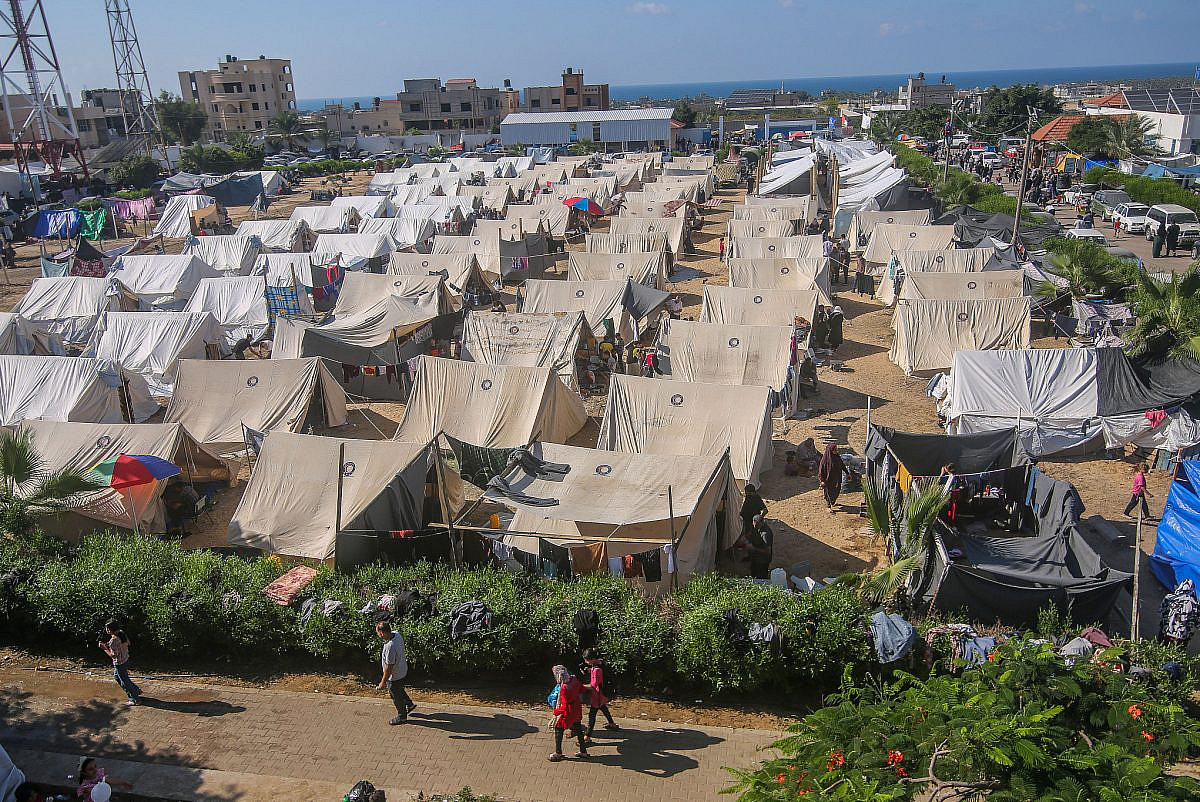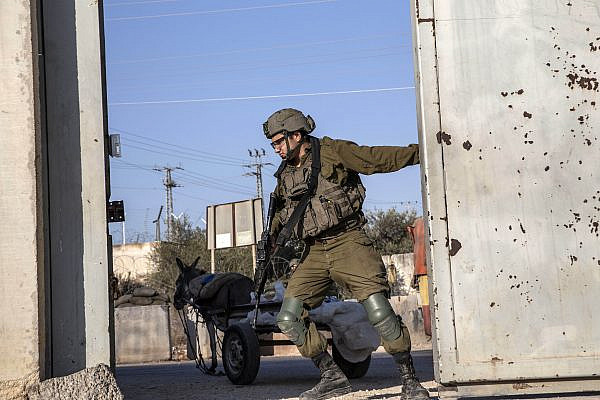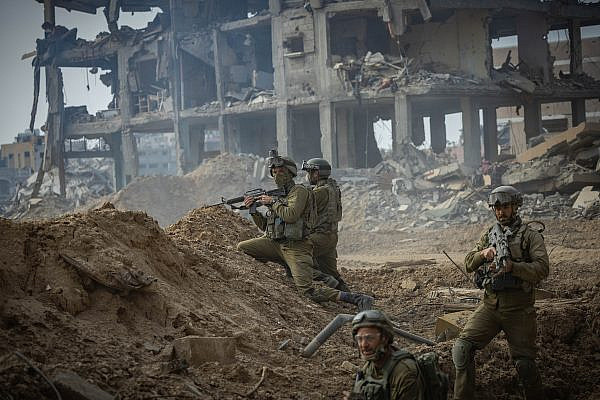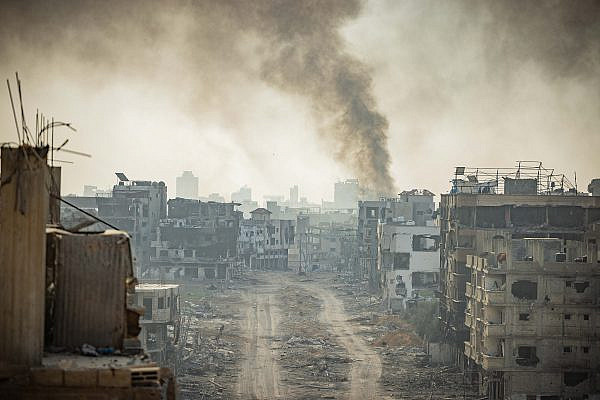The horrific images emerging from Gaza’s Al-Ahli Hospital on Tuesday showed carnage on a scale that eclipsed even the worst of Israel’s back-to-back massacres in the besieged strip over the last 11 days, as U.S.-made fighter jets rained hell upon a civilian population. At least two of these massacres happened earlier on Tuesday, when dozens of people were killed by airstrikes in the southern towns of Khan Younis and Rafah. These were all-but-forgotten, though, when the scenes from Al-Ahli began to emerge. As the smoke cleared, health officials estimated that some 500 people were killed, many of them torn limb from limb.
With details of the catastrophe still pending independent investigation, U.S. President Joe Biden, who visited Tel Aviv yesterday, has already gone on-record blaming the massacre “on the other team” based on supposed “evidence” Israel has provided. Palestinians dispute this account, pointing to a similar pattern of Israeli deflection that was frequently disproven, including after the killing of Palestinian-American journalist Shireen Abu Akleh in May of last year.
If, for Palestinians, Tuesday’s massacre has the hallmarks of an Israeli attack, it is not just because the state has a history of bombing clearly marked schools and hospitals. Although the causes of the Al-Ahli massacre are still being disputed, the enormity of this war on Gaza has only one obvious analog: Israel’s 1948 ethnic cleansing of Palestinian towns and villages.
Indeed, the psychological impact of Tuesday’s attack evokes the horrifying memory of countless other massacres, not least in the Palestinian village of Deir Yassin, where Zionist terrorists executed more than 100 Palestinians in April 1948. Irgun commander Ben-Zion Cohen, who oversaw the “operation,” later said that its intent was to spread terror among Palestine’s indigenous population, pushing them to leave. “Three or four more Deir Yassins,” Cohen boasted, “and not a single Arab would have remained in the country.”
This is one reason why Palestinians and their allies have made remaining on the land a rallying cry of this war. From the way it is being executed to the rhetoric Israel and its allies are using to justify it, this onslaught, for Palestinians, appears designed to push Gaza’s people — all of them — off the land.
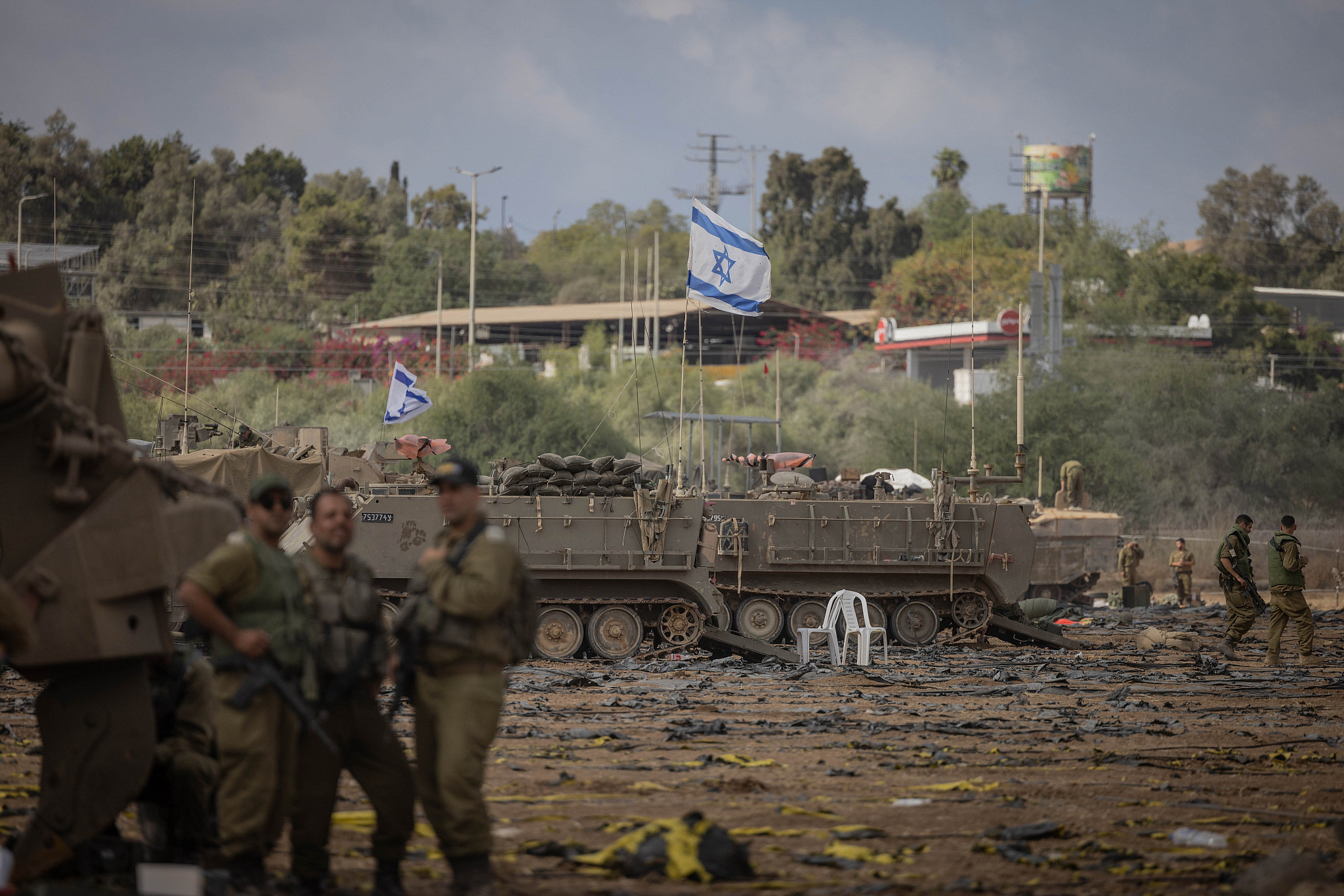
The first tangible sign of this came last Friday. An Israeli evacuation order, announced that morning, left more than a million Palestinians in Gaza’s northern half with an impossible choice: remain and risk death from an impending Israeli ground assault, or make the journey south, where hundreds had been killed and thousands more already displaced by Israel’s wholesale destruction of entire neighborhoods. With no guarantee of shelter and supplies dwindling, some chose to stay home or join other families in the courtyards of nearby schools or hospitals like Al-Ahli. Now they, too, are disappearing by the hundreds from northern Gaza.
The mass exodus — which the United Nations warned would be “impossible” within the 24-hour deadline initially set by the Israeli military — came amid ongoing bombardment and an already dire shortage of water, food, and fuel. Photojournalist Mohammed Zaanoun described frantic civilians carrying what they could on foot, in cars, or huddled in trucks along Gaza’s central highway, which was targeted by an Israeli airstrike that killed 70 people.
In the southern city of Khan Younis, freelance journalist Ruwaida Kamal Amer spoke to Palestinians who had escaped there from nearby towns along Gaza’s eastern edge, adding to the pressure to find shelter for the tens of thousands more arriving or en route. As Fadi Abu Shammalah, executive director of Gaza’s General Union of Cultural Centers, recounted in a poignant New York Times audio story, the scenes in the south have evoked memories of the Nakba, or catastrophe, when some three-quarters of Palestine’s indigenous population fled or were expelled in 1948.
The possibility of another population “transfer” at such a massive scale — Gaza’s population makes up more than a third of the Palestinians in the occupied territories — may have seemed impractical, if not impossible, just two weeks ago. But recent events and statements suggest that efforts may be underway to see it through, even under the guise of a “humanitarian” solution.
‘Tent cities’
Although details of how and when such a forced displacement could happen remain scant, it is clear that forcing hundreds of thousands of Palestinians into the Sinai desert, where Egypt shares its border with Gaza and Israel, would be less about ensuring a “safe haven” for civilians than a way for Israel to evade the core demands of an already uprooted population — one that it views as disposable.
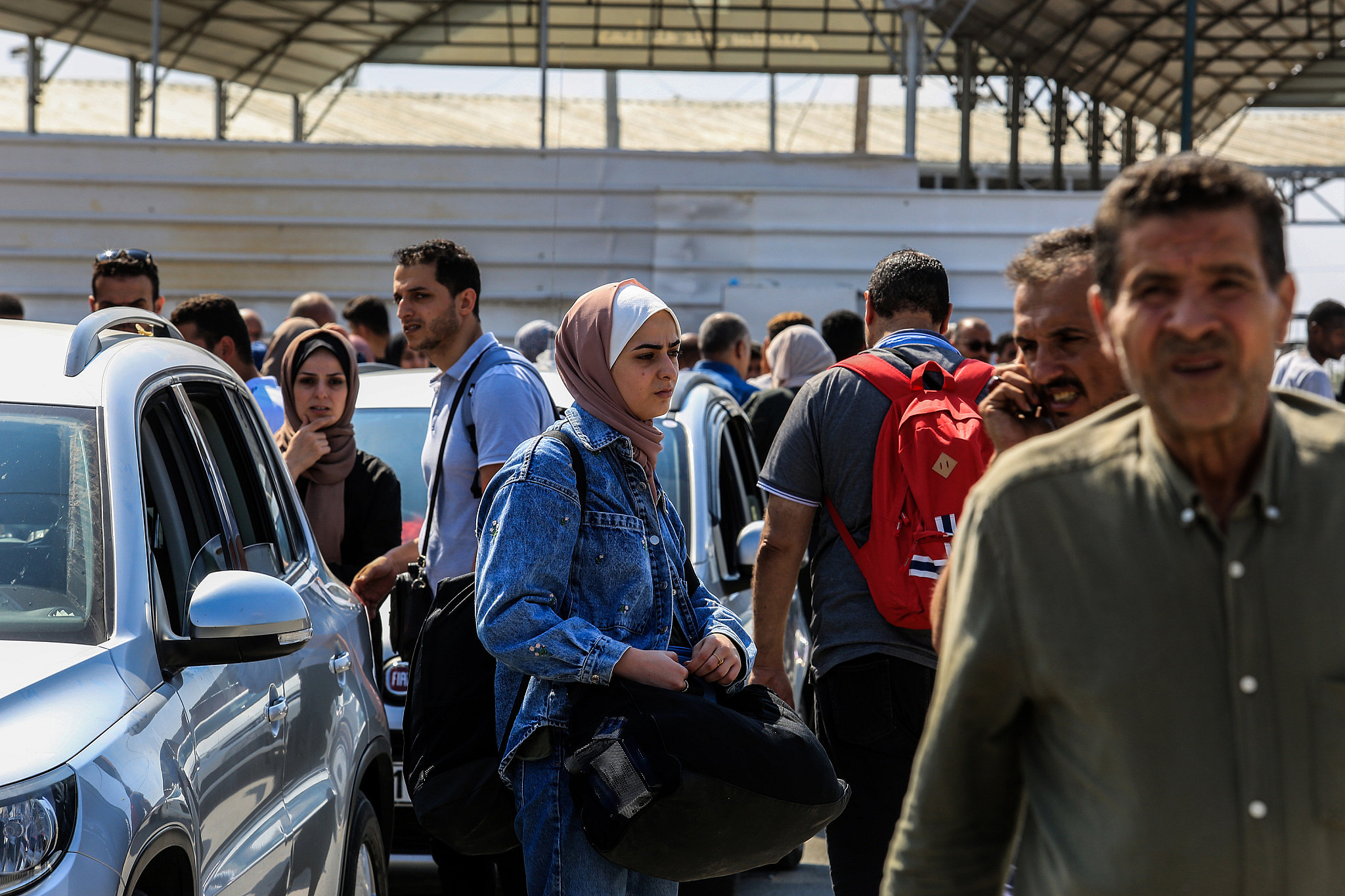
As if the staggering death toll were not proof enough of this disdain, Israeli spokespersons have openly touted expulsion. Speaking to Al Jazeera’s Marc Lamont Hill on Friday, mere hours after the evacuation order was broadcast, Danny Ayalon, a former Israeli deputy foreign minister and ambassador to the United States, pointed to “a huge expanse, almost endless space in the Sinai desert,” where, he said, Israel and the international community could prepare “tent cities … just like for the refugees of Syria.”
Negotiating this would seem to be a tall order: Israel has repeatedly bombarded the Rafah Crossing that separates Egypt from Gaza, and the Egyptian government has so far refused to open it. But U.S. Secretary of State Anthony Blinken, speaking to reporters as he was boarding his plane to the region last Wednesday, seemed to hint at plans to sway the Egyptian position. Asked about obstacles to securing “safe passage out of Gaza” for Palestinian civilians, Blinken, without offering details, said, “We’re talking to Egypt about that.”
The idea likely topped the agenda of Blinken’s meetings with other Arab leaders, too, though the United States has since been more careful to not speak about it publicly. On Saturday, the State Secretary met with UAE President Sheikh Mohammed bin Zayed Al Nahyan, whose country’s normalization with Israel in 2020 was supposed to prefigure a similar deal between Israel and Saudi Arabia. The outcomes of the Abu Dhabi meeting are not yet known, and the State Department’s readout offered no hint that Palestinian transfer to Egypt was on the table.
Earlier that day, at his on-record exchange with Saudi Foreign Minister Prince Faisal bin Farhan Al Saud, Blinken spoke only of “establishing safe areas in Gaza.” Details of Blinken’s later meeting with Saudi Crown Prince Mohammed bin Salman were scarce, but the Washington Post reported on Sunday that bin Salman, contradicting the American position, had called for a halt to Israel’s operation.
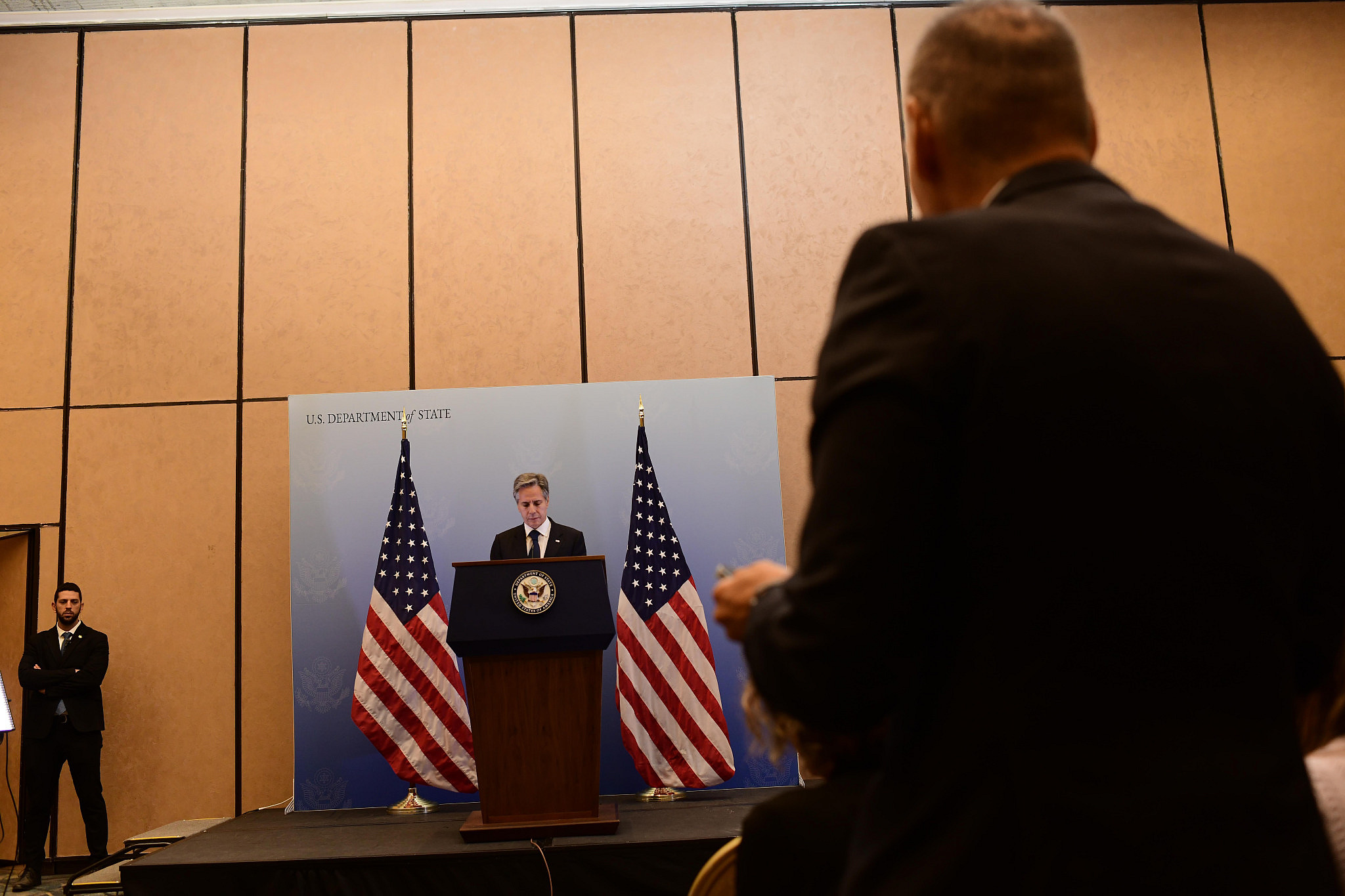
Beyond the Gulf, the idea of transfer earned more direct rebuke. Turkish Foreign Minister Hakan Fidan, speaking at a press conference in Istanbul with his Egyptian counterpart, Sameh Shoukry, told reporters that his government rejects “the policy of Palestinians being removed from their homes in Gaza and exiled into Egypt.” According to the Wall Street Journal, Egypt had agreed to a temporary window for U.S. citizens in Gaza to cross through Rafah on Saturday, but that arrangement expired at 5 p.m. Palestine time without any Americans crossing.
Meanwhile, Egyptian outlet Mada Masr, in a report published ahead of Blinken’s meeting with President Abdel Fattah El-Sisi on Sunday, cited government officials who said that “several international parties discussed various economic incentives with Egypt in exchange for its acceptance of large inflows of displaced Palestinians into Sinai.” On its X (Twitter) feed, Mada Masr later issued a clarification in which it said any government consideration of the terms on offer is being driven by “a possible Palestinian exodus imposed by Israel,” which Sisi told Blinken had exacted “collective punishment” on the people of Gaza.
On Wednesday, speaking alongside German Chancellor Olaf Scholz in Cairo, Sisi doubled down on what appears to be the evolving Egyptian position, saying his government would not accept “an attempt to force civilian residents to take refuge and migrate to Egypt,” suggesting Israel allow them into the Negev desert instead. Sisi’s rejection has now been echoed by every Arab leader on Blinken’s tour, and even by battered Palestinian Authority President Mahmoud Abbas, who said as much in a televised address hours after canceling his participation in what was to be a four-way summit with Biden, Sisi, and King Abdullah II of Jordan.
‘Gaza must be smaller’
Despite apparent unanimity among Arab heads of state, America’s president and its top diplomat have continued to steer clear of calling for an immediate ceasefire, leaving open the question of just how the Biden administration would guarantee safe haven for the growing numbers of Palestinians amassing in the south or stranded elsewhere with shrinking supplies of food and water.
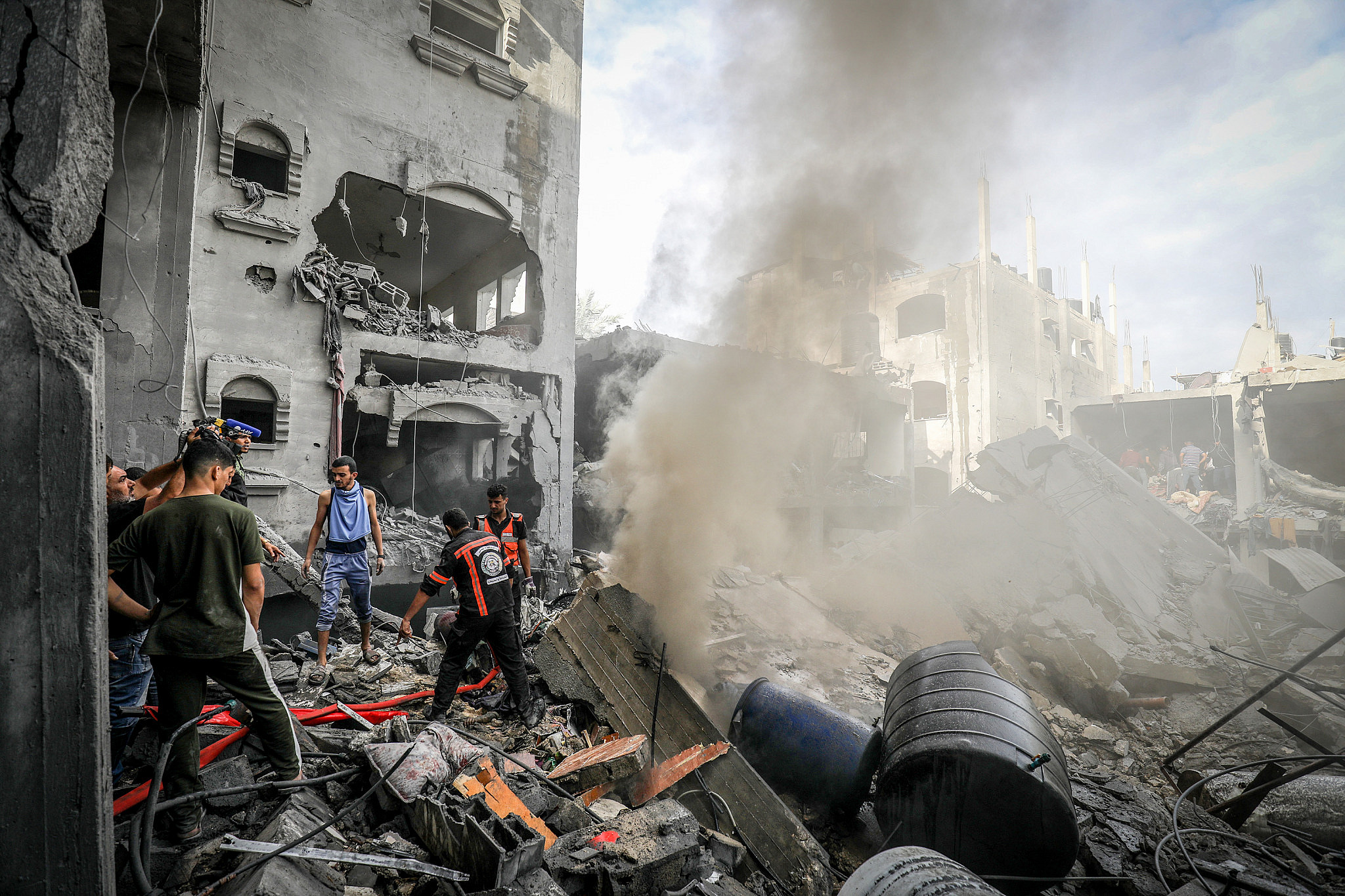
Meanwhile, the Israelis, drawing on Biden’s Tel Aviv visit, where he reiterated America’s unconditional support to Israel, seem to be zeroing in on another “solution.” On Wednesday morning, Israeli Army Radio reported that Minister of Foreign Affairs Eli Cohen had alluded to partial annexation. “At the end of this war,” said Cohen, “not only will Hamas no longer be in Gaza, the territory of Gaza will also decrease.”
This view was echoed by Gideon Sa’ar, an opposition MK brought into Israel’s emergency government last week, who said that Gaza “must be smaller at the end of the war … whoever starts a war against Israel must lose territory.” Such an Israeli move would not be without precedent: as Harvard professor Sara Roy has documented, Israeli-imposed buffer zones had already absorbed “nearly 14 percent of Gaza’s total land and at least 48 percent of [its] total arable land.”
With a ground incursion imminent, Ayalon’s suggestion on Al Jazeera that Israel would ensure any Palestinian displacement would only be “for a temporary time” seems less and less believable. Never mind that Ayalon’s phrase comes with deep historical implications for Gaza’s Palestinians, who know all-too-well the perils of embracing Israeli promises. (Recall, for example, that the ceasefire that followed 2014’s “Operation Protection Edge” was supposed to lead to negotiations over opening the Gaza port — a prospect that quickly dimmed as Israel’s siege grew more entrenched in the years leading up to this war.) Israel’s refusal to allow the right of return for millions of other refugees, including the nearly 1.5 million registered in Gaza, is proof enough for Palestinians that any “relocation” is bound to be permanent.
Most read on +972
They have good reason to conclude that. Successive Israeli leaders have for decades lamented the presence of Palestinians along the narrow strip. “I want them all to go, even if they go to the moon,” Prime Minister Levi Eshkol said of Gaza’s population in 1967. Twenty-five years later, not long before signing the Oslo Accords, Prime Minister Yitzhak Rabin would make a similar wish — “I would like Gaza to sink into the sea” — before conceding that this was not possible. His successors in today’s government, though, seem intent on making that wish a reality.
For now, as the specter of yet another displacement looms over its besieged and bombarded population, Gaza continues to endure a horrific Israeli onslaught that has already claimed the lives of more than 3,000 Palestinians. Denied safe haven or sustenance, their survival, Israel would have them believe, may hinge on a forced population transfer — a war crime for which the international community seems unable, or unwilling, to secure an alternative.


